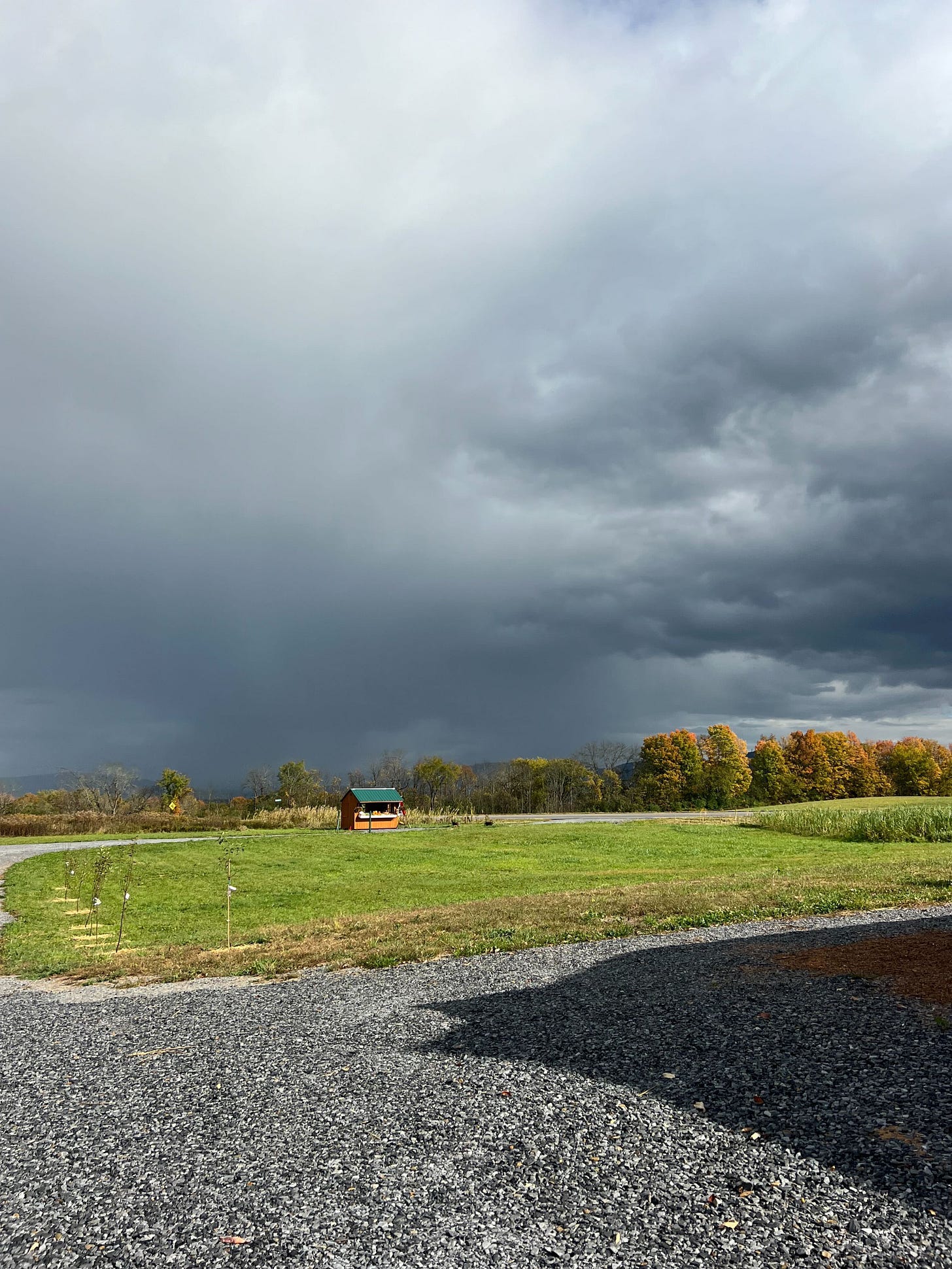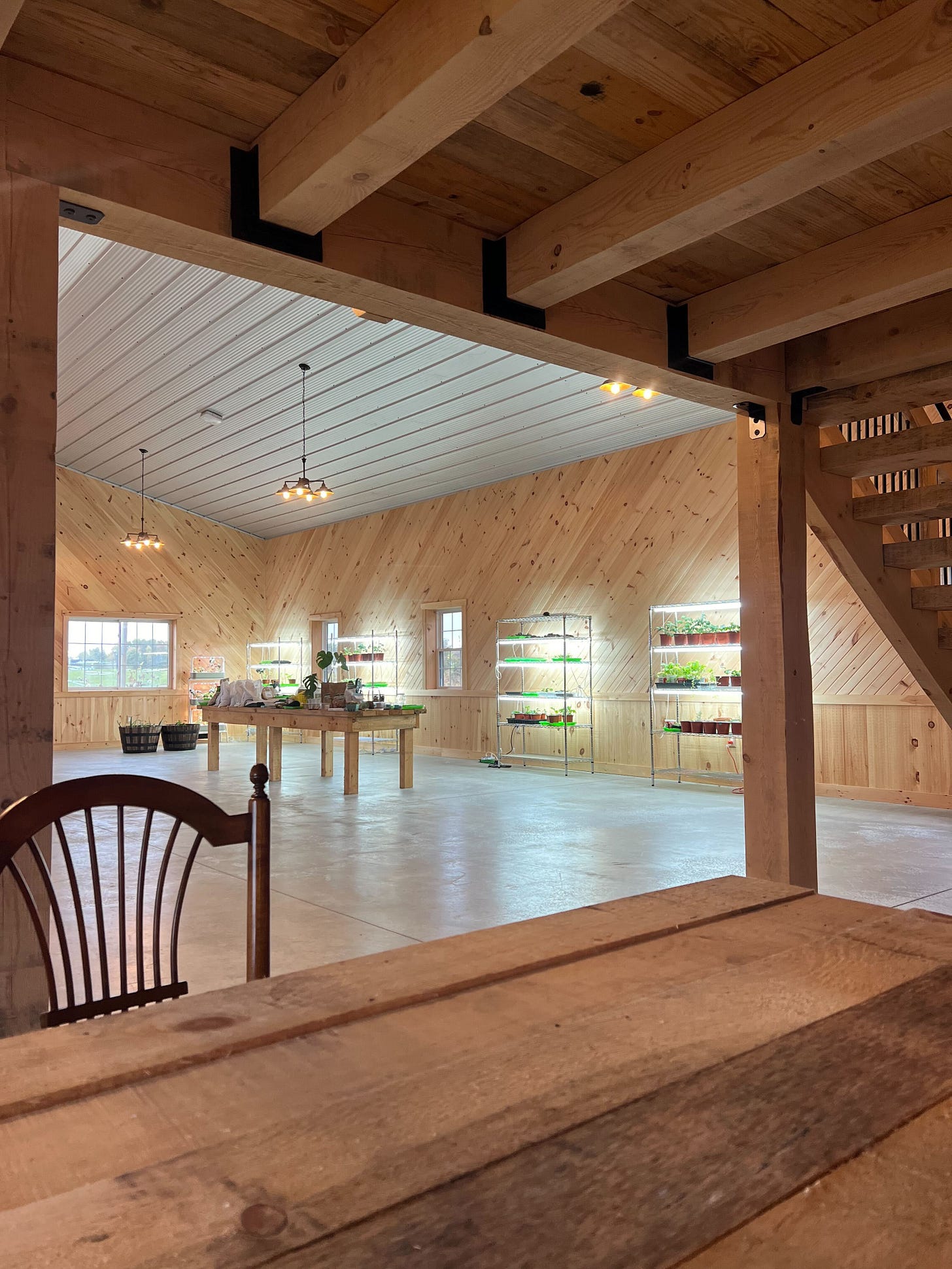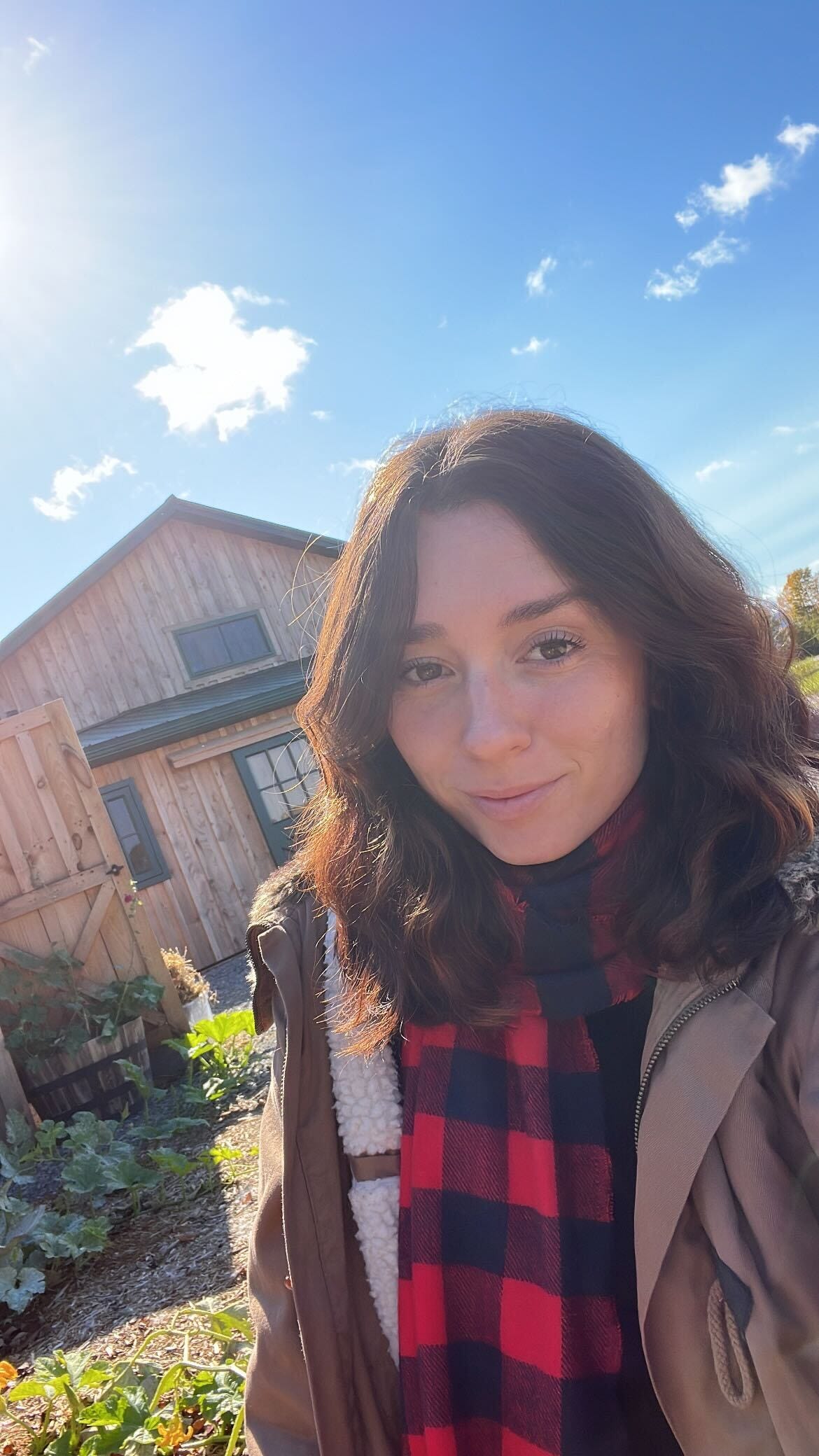One of the biggest wealth transfers in U.S. history just commenced. Are you aware of it?
$24 trillion worth of farms and farmland are about to be for sale. Here's why we need everyday Americans to buy it up before investment funds.
I spotted the 2025 Farmer’s Almanac the day it came out last month at a general store in Vermont. I couldn’t grab it fast enough, having lived my life according to its teachings nearly one-year ago.
Once I got home from my jaunt that day, I dove into one of the most informative and historic guides available in America (since 1792). Not even a few pages into the book, I spotted an eye-opening statistic that caused me to lean back in my chair, glance out the window, and ponder what I had just read.
“We’re currently at the onset of one of the largest wealth transfers in the history of the U.S., with approximately $24 trillion in real estate assets slated to transfer over the next 20-years or so,” said Bryce Berglund, content marketing specialist at National Land Realty in Greenville, South Carolina.
He also underscored that as the current population of farmland owners continues to age, it may be possible for aspiring landowners to acquire land in the coming years.
Considering the average age of the American farmer is now over 60, these individuals are:
retiring
selling
passing farms onto friends, family, coworkers, or investors
liquidating to pay off debts
fracturing their farms to make them more manageable
That should be a good thing, right? This farmland is going to be for sale… it’s what we should all want, right? I sat there with my book, looking out over my barn, processing the depth of this wealth transfer.
If this farmland transfers into the right hands, then of course it’s a good thing. But if it transfers into the wrong hands… well let’s just say I have heard from farmers in Upstate New York that Wall Street, developers, and investment funds are quietly approaching these 60-year-old farmers with a check in their hands. They show up, make a lucrative offer, and in many cases, the farmer has no choice but to accept the offer if they are sitting on an unmanageable amount of work, land, or debt. It’s not that the farmers want to ‘sell out;’ rather, it’s that they’ve engaged in incredibly physically and mentally demanding work for so many decades that they just can’t take it anymore.
Ideally, the farms pass onto the kids, keeping it in the family. This was how farms transferred hands in the past. The problem is that today, many of these farmers don’t have kids or more commonly, their kids aren’t interested in the grueling work of farming. The Wall Street money is there, it’s accessible, and it’s hard to turn down when there aren’t many options at these aging farmers’ fingertips.
And these farms aren’t exactly small
The average size of an American family farm in the 1950s was 205 acres. I don’t know if you’ve ever walked an acre before, but if you haven’t, 205 acres is a LOT of land. To put that into perspective, that’s 155 football fields. It’s not exactly something you can walk. It’s never-ending work tending to the land, farming it, managing it, monitoring it, and doing right by it, especially when you’re dealing with hundreds of acres.
These aging farmers inherited massive farms from their parents and grandparents, and are staring down a reality today where competing with conglomerate, big-ag entities is undercutting their profitability, while also dealing with increasing property values, property taxes, and so forth. It’s not worth it to them to try and manage the 205 acres when companies are willing to buy the acreage and split it up into unaffordable housing units that are blanketing the country and erasing agrarian landscapes.
Which brings me to present day. There is about to be TRILLIONS OF DOLLARS worth of farmland that will be for sale in the United States. I would go as far to call this the land revolution of our lifetimes.
Why do I call it a revolution?
I call it that because there is going to be a battle for this farmland. This land is about to be for sale, and these parties know it:
Wall Street
investment funds
banks
developers
foreign entities
billionaires
solar farmers
big ag companies that operate outside the sphere of small to medium-sized family farms
I see a lot of people feeling pessimistic about the outcome of this battle. I get it, considering in 1935 America had 6.8 million farms to serve the 127 million people here… while today in 2024, we have only 1.89 million farms to serve 333 million Americans. Farms are virtually disappearing, being wiped out for construction or absorbed into the big ag empires that are destroying the environment and producing nutrient-depleted foods farmed using monoculture methods.
But I am here to offer an alternative viewpoint. First, I am here to sound the alarm. The amount of farms in the U.S. decreased by 7% from 2017 to 2023. That’s a pace that should have every person reading this alarmed. When there’s fewer than 1 million farms in this country, who will feed us? Foreign countries, manufacturing plants, big ag conglomerates that saturate foods in pesticides, and the government.
It’s a much better and healthier reality for all of us if everyday Americans, small businesses, and families manage the farms that grow our food.
According to the USDA, the U.S. has 879 million acres of farmland (as of 2023) when compared to 900 million in 2017. That means that 21 million acres of farmland was changed or converted over the last 6-years. That’s a lot of land that got pulled out of farming - there is no doubt about it. However, with 879 million acres still up for grabs, that gives me some hope.
And that’s where my alternative viewpoint comes into the mix. It is critically important that every American care about this, starting now. I bought 6.74 acres of farmland last year using a loan from Farm Credit East. I found my farmland on Zillow. However, not all farmland makes it to Zillow, which is why I want to talk about charitable remainder trusts (CRTs) for a moment.
How to buy farmland for cheap
CRTs allow farmers to donate or transfer land to a future buyer while also accepting income on the land. This is happening around the country right now. Let’s say a farmer owns 2,000-acres of land. He can donate 100 acres of his land to a buyer for a down payment (many farmers ask for as little as $50) and agree to accept a payment of $500/month until the land is either paid off OR the farmer passes on. CRTs then pass the farming assets and equipment onto one or many of the people who are currently paying the farmer per month to use some of the acreage.
I am a fan of this for a few reasons:
it keeps the transfer of farmland between farmers and everyday people
it makes farmland affordable without requiring a 30 to 40% down payment
it gives the farmer a ‘rent’ that allows them to more easily retire
it allows the farmer to train the incoming new farmland owner and pass on critical environmental and agricultural knowledge
farmers can be skeptical of big banks and government, and will only agree to this kind of arrangement
There is also the good ole’ loan route, which is the one I took with Farm Credit East. I break this down in more detail in this article here. And don’t forget the USDA!
The are more options for buying this farmland than you realize. It hasn’t been talked about until now. There is a land siege occurring before our very eyes, absorbing the farms that used to feed us, clothe us, and function as community epicenters. Farms are part of the fabric of this country. These agricultural businesses pass on essential survival skills, like gardening, canning, hunting, foraging, and so forth. All of it is lost when a farm that’s been in a family for 5 generations ends up in the hands of a big city developer with plans to flatten the entire property and erect expensive apartment buildings.
And the most important thing to take away from this, which I can speak to firsthand as someone who has been farming, solo, since April of this year… is that you do not need hundreds of acres to feed your family. In fact, you need 1/8th of an acre to feed your family. You can feed your entire community off just ONE acre. We have technology available to us they didn’t have in 1935 today. I grow microgreens indoors on an industrial shelving unit with trays and a mister bottle. We can go vertically as opposed to horizontally. We can utilize the tiniest of space to nourish our families.
It is absolutely possible to run a profitable farm that also provides for your family on just a few acres. If the price tag on 400 acres online seems out of reach - you probably don’t need 400 acres. We desperately need more small-scale farms to start tending to the soil correctly by rotating crops, pursuing no-till farming methods, engaging in succession planting, and so forth.
We need to take action… NOW
This farmland that is now for sale needs to end up in all of our hands. Approach the farmers. Call them or visit their farms. Buy something from them. Get to know them. Ask about farmland or renting via a CRT. Every single one of them will be interested in what you have to say. But YOU have to initiate this process. While we sit behind our computers and wait, Wall Street is physically knocking on their doors. I have heard the stories!
We need to pick up the phone, get in our cars, visit the farm stands, and shake some hands. If all of the $24 trillion of farmland ends up in the wrong hands… well, I don’t want to know what that future looks like. It’s unrealistic to think everyday people will buy all $24 trillion of that farmland. But even if we make the effort to buy up just 1/4th of it, that’ll be enough to guarantee food autonomy for ourselves down the line.
And for my final plea - none of these bad actors have the environment in mind when they buy this farmland. Our soil is practically crying out for small scale farming and intimate family-managed operations again. If you consider yourself an environmentalist, then we need you to steward this land. And if you’ve never farmed a day in your life, guess what? Neither had I! I barely know what I am doing as I write this - but I am doing it. And it’s the most spiritually and physically rewarding thing I have ever done. It’s addicting.
I write about all of my experiences here, from my loan details and the costs of my barn center, to what I am learning daily as a first-generation, solo farmer in Upstate New York. I encourage you to follow along with me here and strike up a conversation with the people in your life about going all-in on some land.
Last week’s article can be found here.









You probably already follow Texas Slim and The Beef Initiative project. In his "Harvest of Deception" piece he notes that Bill Gates is now the largest owner of farmland in the US. He doesn't personally farm any of it, but instead has others farm it. It's very similar to the "Lord of the Manor" in the Middle Ages having serfs to farm his land. Farmers in the dire straits you've outlined have sold to him at bargain prices. At 77 I'm a tad old to be farming, but I do remember growing up that most families had a small garden that contributed to their food. It's still common in the UK for residents to have an "allotment" where they can grow food, though the greens in UK have started claiming that these allotments create more greenhouse gases than conventional farms. In the Middle Ages land barons would plant grass to show the world they were so wealthy that they didn't need to grow crops on all of their land. We still do that today in just about every suburb in America, spending vast sums of money to maintain lawns that serve no useful purpose. If every lawn was replaced with a garden we could all eat healthier for less money.
Such a great article. Our family has been wanting to homestead for some time, my son is actually a farmer, but land has gotten pretty expensive here in Oregon. I haven't heard about CRT's, I love this article because we need young farmers to think differently and start smaller. We have wanted to do something just like this. Thank you for reminding me that anything is possible.